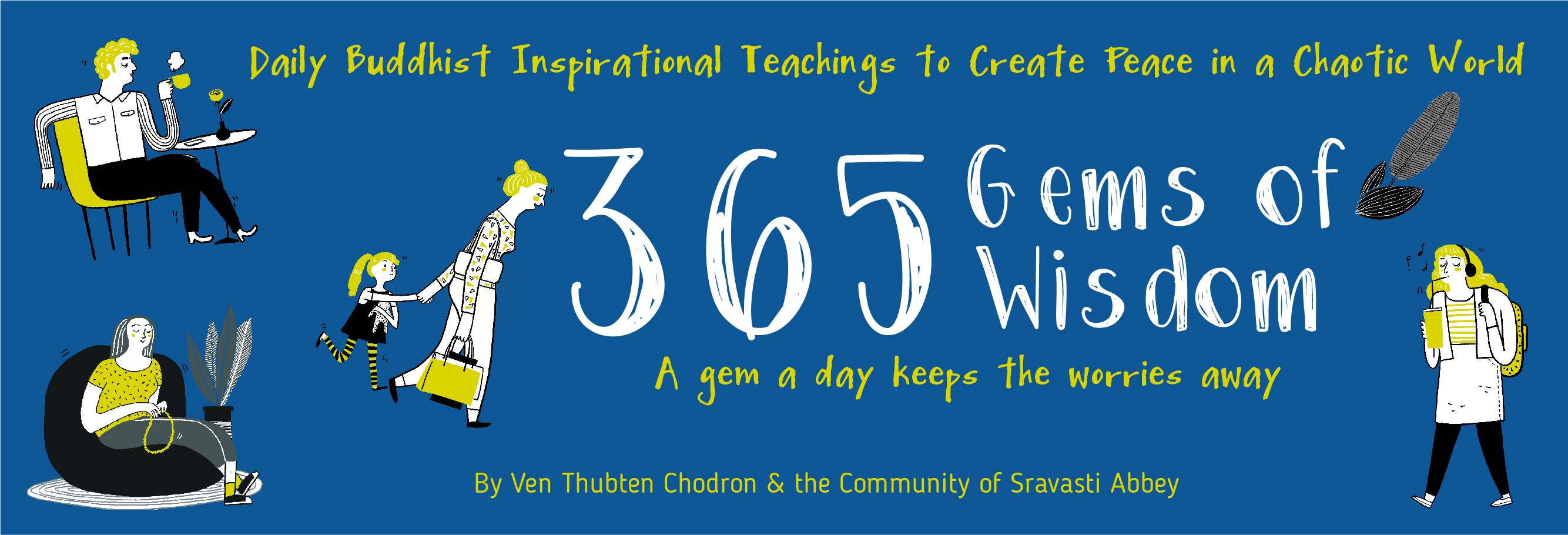February 17 : The Agent, Object and Action
Since the five perfections without wisdom cannot bring perfect awakening, along with skilful means cultivate the wisdom which does not conceive the three spheres [as real]. This is the practice of Bodhisattvas.
They often talk about the first five perfections as blind people with legs and wisdom as a person with sight who does not have legs. It is a little extreme as an example, but the idea is that the first five far-reaching practices do not see things in their actual mode of existence, whereas wisdom does. To get to full awakening, we need both the method side of the path — the energy and the merit that moves us towards awakening — and the wisdom side of the path, which removes all the defilements by clearly seeing things as they are. One way to make sure that we have both is to contemplate the three spheres, sometimes called the circle of three, whenever we finish practising the first five far-reaching attitudes.
This involves contemplating that the agent, the object, and the action are empty of inherent existence and arise dependently, they therefore exist only in relationship to each other. It is quite important to do this because things get a bit sticky if the mind has lost the wisdom perspective. We might start grasping our virtue as truly existent: “I’m a truly existent Dharma practitioner who’s wonderful,” or, “I’m a truly existent deity,” if we do Tantra practice. We also contemplate the circle of three when we dedicate merit at the end of the day, remembering that our self who is dedicating the merit, the sentient beings receiving the merit, and the action of dedicating all exist dependently but not inherently.
When we see something, we usually have the feeling that there is an eye consciousness hanging around waiting to perceive something and an object existing out there objectively, and there is a real action of seeing which happens when they come together. But subject and object exist only in relation to one another since something does not become an eye-consciousness until it perceives an object of sight, and something does not become an object of sight unless it is perceived by an eye-consciousness. Being aware throughout the day of how all things are dependent and come into existence in relation to each other is a very good mindfulness practice to counteract our tendency to view everything as discrete objects existing in and of themselves.
“365 Gems of Wisdom” First Volume (January — March) e-book is out now!

